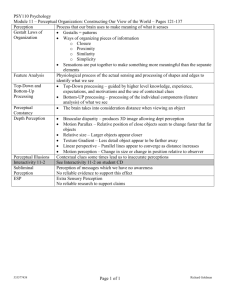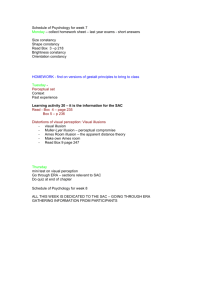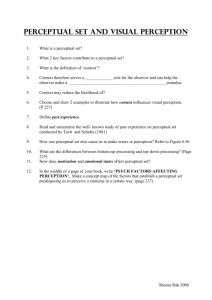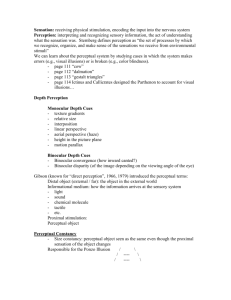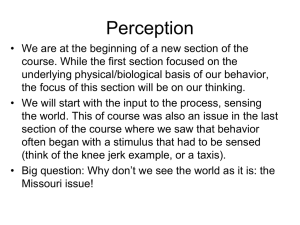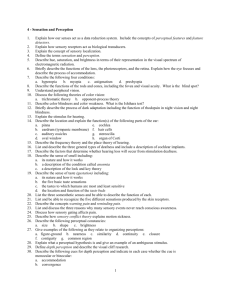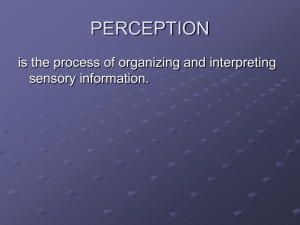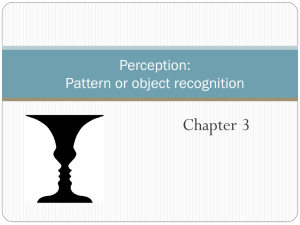3b The effect of psychological factors on Perceptual Set chp 3
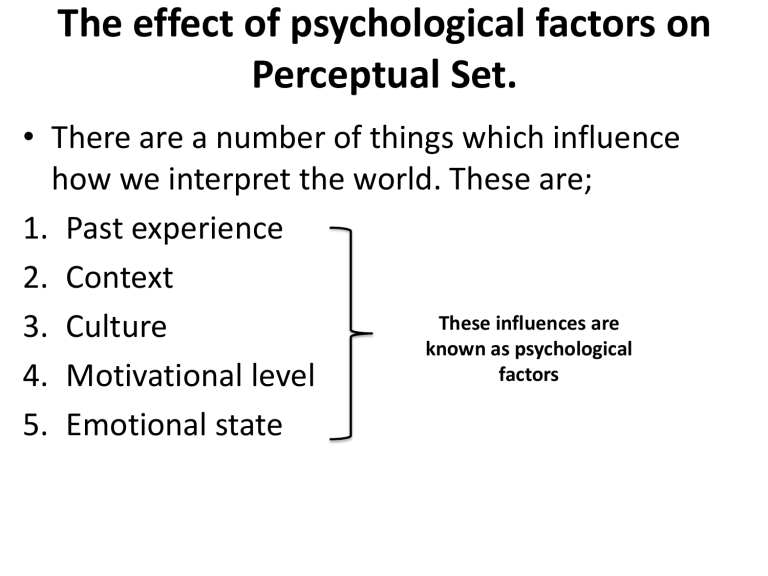
The effect of psychological factors on
Perceptual Set.
• There are a number of things which influence how we interpret the world. These are;
1. Past experience
2. Context
3. Culture
4. Motivational level
5. Emotional state
These influences are known as psychological factors
• Everyone has different psychological factors that help them interpret the world which is why we all perceive information is our own unique way.
• Also past experience and context help us interpret ambiguous figures.
WHAT DO YOU SEE??
Perceptual Set
AKA: Expectancy
Our expectancy or mental predisposition to see what we want to see is called a perceptual set.
Perceptual set is influence by the psychological factors.
There are two ways of processing information
1. Top-down
2. Bottom-up
Top-Down Processing
When we observe the whole image first and apply existing knowledge to give it meaning.
For example: when you read your essay you usually miss spelling mistakes. This is because you are reading your work as you wanted it to be rather then what was on the page. You read what you expect to read rather then what you have written.
TOP-DOWN
PROCESSING
Drawing on past experience and knowledge to interpret sensations
Interpret information according to expectations
A perception is formed
Bottom-Up Processing
When we analyse the individual parts of a stimulus to gain meaning of the whole.
A perception is formed
For example: children use bottom up processing because they don’t have much past experience. They ask questions to make sense of their thoughts. Eg. its large and grey, it has four legs, big ears and a trunk. It is an elephant.
Creating a whole picture from the individual elements
Analysing the specific features or elements of a stimulus
BOTTOM-UP
PROCESSING
• Have a read of the “did you know” box on page 110.
Why does this occur?
Top down or bottom up processing??
Distortions of Visual Perception
Visual Illusions
•
An object that is interpreted in a way that is not consistent with the objects actual reality. It is experience when our perception of a stimulus is inconsistent with the reality of that object.
Muller-Lyer Illusion
• Which line is longer
Muller-Lyer Illusion
Both lines are of equal length.
It occurs because the eyes look at the wrong spot. They look at the ends rather then the lines.
Ames Room Illusion
Ames Room Illusions http://www.youtube.com/watch?v=Ttd0YjXF0no http://www.youtube.com/watch?v=vhoSqSHMIAc&feature=related
• Construct your own Ames
Room activity.
Psychological perspectives to help explain visual perception
1. Biological perspective:
2. Behavioural perspective:
3. Cognitive perspective:
4. Socio-cultural perspective:
Page 122-124
Write down the main points of each perspective in dot points.
homework
Learning activities
3.4 All
3.8 All
3.11 All
3.13 All
3.17 questions 1,3,5
3.26 questions 1,2,3,4
3.31 questions 1,2,4,6

